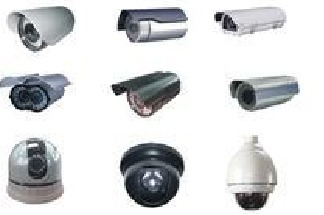Numbers Puzzle Mat has a total of 10 pieces (No border) which includes numbers 0-9.
It is a great EVA Puzzle Mat For Kids because the removable pieces allow kids to develop gross motor skills, hand-eye coordination, logic, reasoning, and visual sensory growth. This mat can be used to design play areas in homes, schools, day cares, and many more places. The top of the puzzle mat is grooved with a non-skid bottom for ultimate safety and protection. An awesome Baby Play Mat for hard floors and soft heads! It is made out of high density Eva Foam for the greatest durability and comfort. EVA foam is durable, non-toxic, premium foam that is lightweight and easy to assemble. It is also water, mold and mildew resistant which makes it easy to clean. Numbers Puzzle Mat Numbers Puzzle Mat,Numbers Jigsaw Mat,Eva Number Puzzle Mat,Foam Puzzle Mats,Eva Interlocking Mats,Foam Number Puzzle Mats Huizhou Melors Plastic Products Factory , http://www.melorsfoam.com From the perspective of monitoring equipment, with the increase of cameras, high-definition camera applications, and higher and higher file storage deadlines, whether storage devices can meet the needs of the future for a long time growth of storage is also a problem that must be solved. Therefore, video surveillance storage devices must at least meet the characteristics of high performance, high capacity, high reliability, and good scalability. The demand for high-definition has become increasingly urgent, and the development of high-definition monitoring storage is also on the rise.
From the perspective of monitoring equipment, with the increase of cameras, high-definition camera applications, and higher and higher file storage deadlines, whether storage devices can meet the needs of the future for a long time growth of storage is also a problem that must be solved. Therefore, video surveillance storage devices must at least meet the characteristics of high performance, high capacity, high reliability, and good scalability. The demand for high-definition has become increasingly urgent, and the development of high-definition monitoring storage is also on the rise.
High-definition storage is booming, but storage pressure is also becoming difficult to cap as system requirements increase. Especially in the development environment of explosive information today, it has often been a roadblocker in the application process. Therefore, if high-definition storage is to be developed, we must first clear the roadblocks, which is to meet the following needs.
1. Capacity Requirements Currently, the resolution of mainstream HD video surveillance needs to reach 720P or above, and the sharp increase in resolution has led to a significant improvement in the quality of high-definition surveillance. This is accompanied by a substantial increase in the code stream. One can imagine that if you need hundreds of thousands of such high-definition monitoring, such a huge video data on the storage device capacity, read and write performance, reliability, etc. have put forward higher requirements. As the carrier of image data and alarm event records, the importance of storage is self-evident. Currently, storage is not only a device, but it has already sublimated to the point of a solution. A large-capacity storage system is not a simple accumulation of storage devices. It also needs to address the completeness of storage mechanisms, storage standards, and availability in terms of time (storage data processing speed) and space (storage capacity). Capacity management system manageability requirements. High-definition video surveillance applications place new demands and challenges on storage.
2. Performance Requirements While high-definition monitoring brings higher-definition picture quality, it comes with the pressure of increased coded stream, the same storage time, and increased storage data volume. This requires that the storage device can efficiently and completely implement secure writing of video data based on the characteristics of high-definition monitoring code streams. In the SD era, video storage requires up to 2 Mbps of bandwidth, but for 720P HD video, the minimum required bandwidth is 4 Mbps. For the same number of channels, HD products will occupy more bandwidth and storage space than SD products. In the case of multiple concurrent writes, the network bandwidth, data processing capacity, cache, etc. have a greater impact, and the storage pressure is very high. At this time, the storage needs a strong CPU network and storage processing capability, hard disk interface data Processing power and optimized processing power for video performance.
3, security requirements Whether high-definition or standard-definition, or for data access security should have a higher consideration. The video data of surveillance video must always be guaranteed to be intact. The real-time, non-stop, and redundancy of video data must be done. In terms of data storage security, there are RAID technologies, and RAID technology mainly solves the three problems of storage. : Capacity, Speed, Security. At present, RAID7 is introduced in the original RAID technology. However, RAID5 has not been standardized yet. Currently, RAID5 is used more frequently for storage. This level of RAID is relatively balanced in terms of speed and security. It loses the capacity of a single bare disk and has an XOR check. The algorithm prevents data loss. You can also use RAID combination to perform various combinations of the original RAID technology to obtain a more efficient or more reliable RAID method. Another mainstream redundancy method is the Hot Standby function, also called HotSpare. Hot Standby technology is divided into dedicated Hot Standby and global Hot Standby, which means hot standby for one RAID volume group or all disks of the entire device. Prepared to support. Zhang Qinghua, product manager of DaHua Group, said: “In the application of cluster mode, multi-machine hot standby redundancy technology is used, devices are mutually redundant and backup, and distributed computing and data processing are implemented, and any device failure will not cause business problems. Interruptions, resulting in improved performance and stability."
4. Requirements for centralized management In security monitoring applications, since a large amount of storage devices and massive data in storage devices must be effectively managed, it is necessary to provide convenient, reliable, and transparent support for the use of end users. The greatest value of storage lies in the storage and retrieval of historical data. And HD can provide more complete, clear, authentic and reliable data. For the public security organs, when the previous case occurred due to the obscurity of the analog signal recording screen, it was impossible to make a final conclusion and it was impossible to lock in the suspects at the first time. For traffic management, the fuzzy picture will not be able to lock the responsible person, determine the responsible vehicle, and monitor the dangerous goods at the first time. The advent of the high-definition era has improved the situation in which surveillance video can only be used as a reference. The value of high-definition data preservation has become more important.
Monitoring Storage Drives High-Definition Industry Development Frankly speaking, it is more difficult to do high-definition storage market research. Because the current storage market is no longer the single DVR era of the year, corresponding to the annual shipments of front-end cameras, the annual shipments of DVRs can be calculated and calculated; and then according to the average sales price of DVRs of that year, statistics and Calculate the total market sales of DVR.
From an application level, in fact, in all surveillance image information, only 1% or even less than 1% is useful, and 99% of information is useless information. However, it is precisely with this 99%% of useless information that only 1% of useful information has been deposited. Therefore, whether it is useful or useless video information, it must be stored, which is bound to bring huge storage pressure.
Video surveillance images are often important evidence in many industry events and cases to be verified afterwards. In social security monitoring, banking, and judicial system applications, video surveillance images are often stored for 1-3 months or more. The improvement of the sharpness of the monitoring image will inevitably bring greater pressure on the image storage. For high-definition images captured by high-definition network cameras, network storage systems (including storage servers and storage devices) are required. Based on standard H.264 compression technology, high-definition network cameras, all the way 720P HD full real-time image stream is 2Mbps, video storage space required for an hour is about 900M; all the way 1080P HD camera, stream is 8Mbps, 24-hour video production The data volume is 84GB, the video data volume for 30 days is 2520GB, and the video data volume for one year is 30TB. According to this calculation, if you build 100 cameras on the same road, about 3 PB of storage space will be needed in one year. If it is a safe city project, the total number of monitoring routes is usually several thousand to tens of thousands of roads. Such storage is even more unimaginable, and traditional storage media and systems simply cannot meet the demand.
Due to the need, the storage industry continues to break through technical difficulties to meet the ever-increasing demand for high-definition surveillance image storage, and image storage technology has been greatly improved. At present, the mainstream data hard disk capacity used by the IT industry has reached terabytes, and 2TB and 3TB data hard disks have also been put on the market. Calculated by the hourly data volume of 1G, a 1TB data hard disk can store approximately 720p video images for 1000 hours or 1000 720p HD network cameras for 1 hour of image data. The increase in the capacity of data hard disks satisfies the storage requirements for high-definition video surveillance images, which has become a powerful driving force for the development of the high-definition surveillance market. 
